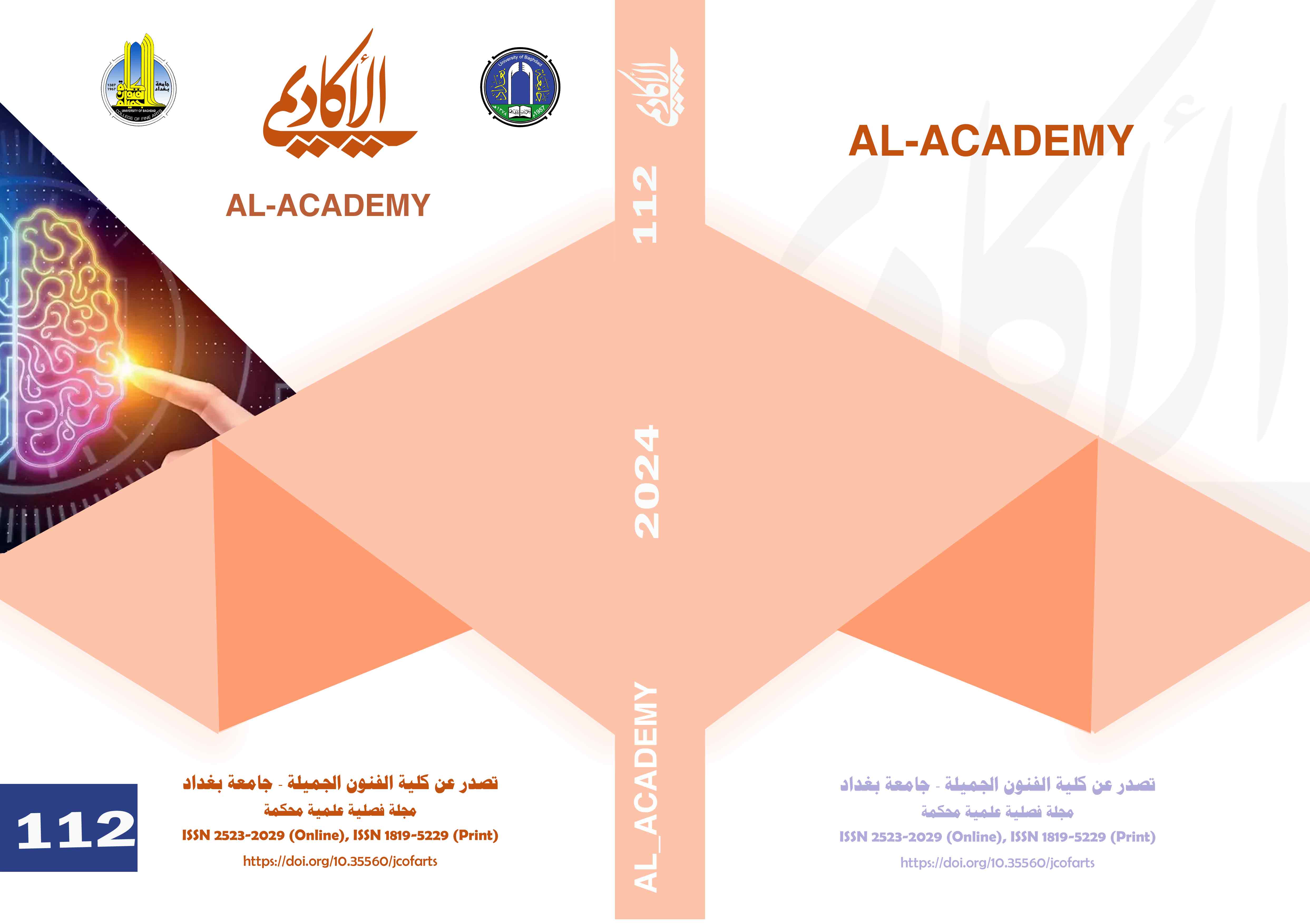Iconic expression in the designs of bullying posters
DOI:
https://doi.org/10.35560/jcofarts1395Keywords:
expression, icon, bullyingAbstract
The poster is one of the important media in the communication process, as it effectively contributes to spreading the necessary awareness and building a community culture that views health phenomena in society as topics that must be coexisted with naturally. In turn, we participate in addressing this phenomenon and reducing it by designing posters for student age groups. To deal with this phenomenon in a humane way that differs from bullying, so the researcher raised the following question to express the problem of her research: What is the iconic expression in the designs of posters for the phenomenon of bullying?
The current research aims to reveal the iconic expression in the designs of posters for the phenomenon of bullying.
The researcher adopted the descriptive approach in analyzing the models because it is a method of analysis that focuses on sufficient information about a particular phenomenon or topic within a specific period of time and then interprets it in an objective manner to reach acceptable generalizations in harmony with the actual data of the phenomenon, as the current research community includes international educational posters issued by UNICEF International participated in the International Day Against Violence and Bullying on (November 1, 2022), which the researcher collected in (10) posters in line with the research topic. The investigation produced a number of results, the most important of which are:
- The representation of cultural symbols in the poster gave its own cultural characteristic in achieving the design message that was reflected in the sample form No. (1).
- The employment of cultural symbols inspired by the cultural factors reflected in the poster design was achieved in the sample model (1,2).
The most important conclusions are:
- The cultural factor is to enrich the design and express its content. The state of change in the environment of the cultural thought of society creates something similar in the poster.
- Culture is an extension of human minds and feelings and is a means of communication and transfer of information between the designer and the recipient in designing posters against the phenomenon of bullying.
Keywords: expression - icon - bullying.
References
Abdul Karim, S. A. (2006). Visual communication in informational poster designs. Master's thesis, College of Fine Arts, Department of Design.
alathary, A. A.-S. (2004). The Structure of Expression in Pottery and Ceramic Sculptures in Ancient Iraq , unpublished doctoral thesis. College of Fine Arts, University of Baghdad.
Al-Duwairi, W. (2015). Family environment and bullying: A study of the impact of the family environment on student bullying. Jordan: Social Affairs Magazine, Volume 32, Issue 126.
Ali, S. (2019). The global structure of the bullying scale among middle school students in Baghdad Governorate. Al-Ustath Journal for Humanities and Social Sciences, 8(3).
alsadiqi, m. s. (2017). The effectiveness of the rational-emotional counseling program in reducing bullying behavior. Mansoura University.
Al-Sheikhli, M. I. (1987). An analytical study of the cover designs of children’s magazines in Iraq, Master’s thesis, print design. College of Fine Arts, University of Baghdad.
George, L., & Mark, J. (2009). The Metaphors We Live By (2 ed.). (A. Jahfa, Trans.) Casablanca, Morocco: Toubkal Publishing House.
Ibn Al-Mu’tazz, A. A.-A. (2012). Al-Badi (1 ed.). (I. Matraji, Trans.) Beirut: Cultural Books Foundation for Printing and Publishing.
Ibn Manzoor, J. a.-D. (1999). Lexicon of Lisan al-Arab. Lebanon: Dar Sader for Printing and Publishing.
Josephine, O. F. (2020). Language and Persuasion: A Semiotic Analysis of Graphic Design in Selected Educational Billboards. federal University.
Kerr, E. (1992). cimiaa of theater and drama. (R. Karim, Trans.) Beirut: Arab Cultural Center.
Khalil, S. (1969). Advertising - its history - foundations - rules - arts - ethics. Cairo: Anglo-Egyptian Library.
Khoj, H. A. (2012). School bullying and its relationship to social skills among primary school students in Jeddah, Kingdom of Saudi Arabia. Journal of Educational and Psychological Sciences, Volume 13, Issue 4, December 2012.
Muhammad, A. (1988). The Art of Hand Drawing (3 ed.). Baghdad: Ministry of Culture Publications.
Muhammad, T. H. (2019). The reality of the phenomenon of cyberbullying among secondary school students in Fayoum Governorate. Fayoum University Journal of Educational and Psychological Sciences, Issue Twelve, Part Two.
Mustafa, I. (1978). Al-Mu’jam Al-Waseet (3 ed., Vol. 1). Al-Murtada Library.
Nathan, N. (1987). ialogue of Vision - An Introduction to Artistic Appreciation and Aesthetic Experience. (J. I. Jabra, Ed., & F. Khalil, Trans.) Baghdad: Al-Ma’mun House for Translation and Publishing.
Nizar, S. (1977). Contemporary Iraqi art. Printing and Publishing Cooperative.
Rajia, A. H. (2007). National affiliation of university students in light of psychological, social and academic variables. College of Education Journal, Volume 17, Issue 72, October.
rassol, M. (2015). The Philosophy of the Scholar from John St. Thomas to Gilles Deleuze. Baghdad: House of Cultural Affairs.
Shaker, L. (2008). The Rhetoric of Iconic Language, The Image as Rhetoric. Baghdad: a series published by Al-Sabah newspaper.
Shaker, S. A. (2005). The Age of the Image. Kuwait: National Council for Culture, Arts and Literature, Al-Siyasah Press.
Shamout, E. E.-D. (1990). The Language of Fine Art (Visual Signs) (1 ed.). Jordan: Labnat University of Jordan.
Sharbat, A. M. (2018). School bullying among secondary school students. Journal of Educational Sciences, Hurghada College of Education, South Valley University, second issue, December.
The judges, A. M.-S., & Muhammad, F. (2013). Bullying behavior in children. Riyadh: Naif Arab University for Science.
Yassin, I. T. (2015). color systems and their role in advertising production. Basra - Al-Tahsiyah: printed in Basra Press.
Downloads
Published
Issue
Section
License
Copyright (c) 2024 Lina Saad Hashim, Maha Moayed Abdel Hussein Nasser

This work is licensed under a Creative Commons Attribution 4.0 International License.













